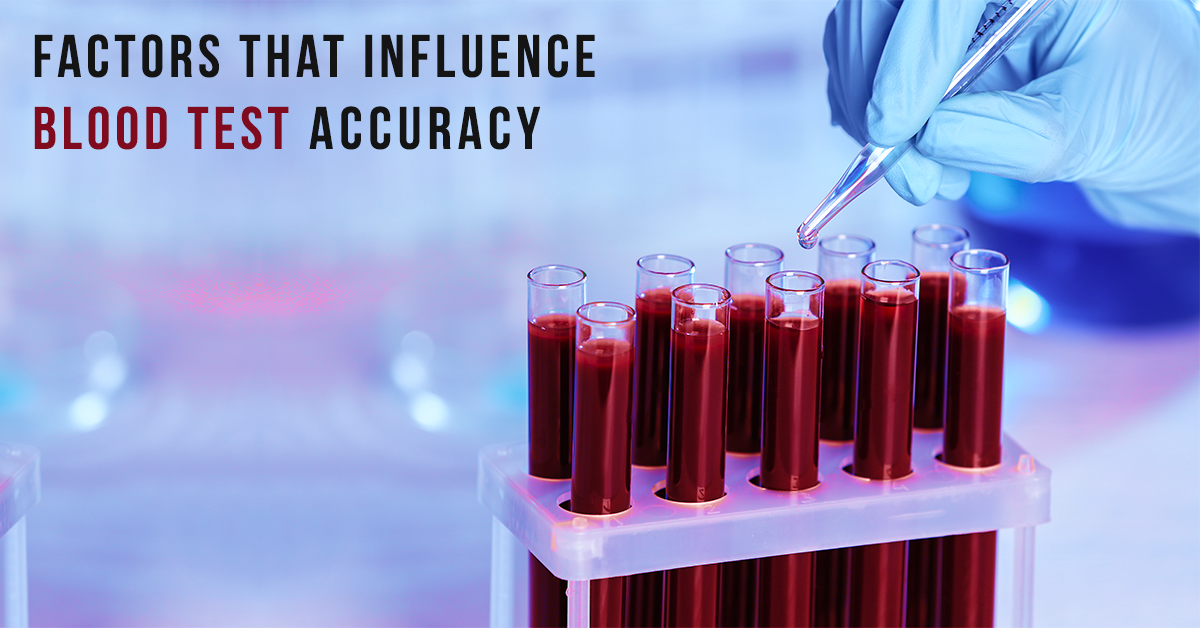Blood test is the first investigation required to diagnose a medical condition. An error-free process that gives accuracy of blood test results is crucial for correct treatment and follow-up. False reports can lead to wrong diagnosis which will further complicate the situation, delaying treatment or may lead to a wrong course of treatment. The process of sample collection involves three parties: the phlebotomist who collects the blood sample, the laboratory that conducts the diagnosis and you. Hence, it is important to minimise error from all angles. Apart from human errors, the risk of environment-tampered samples is great. Given here are few pointers that will help you understand what impacts blood test accuracy and judge the right laboratory to trust for your blood reports.
What is in your hands?
You, yourself can be one of the reasons of a wrong test report. The factors that can alter your test reports can be:
- Stress
- Strenuous exercise
- Unknown pregnancy
- Increased alcohol intake before the test
- Not following the fasting time given for a test
- Having caffeine in form of coffee
- Medicines which you have not disclosed to the doctor
- Eating a lot of red meat
You can try controlling the above-mentioned factors if your reports are not in accordance to what your doctor is suspecting.
[ Also read: How does right way of sample collection at home affect your lab results? ]
Responsibility of the laboratory
The investigation labs work on the principles of accuracy and precision of each test method. Sensitivity and specificity of data are determined by research studies and are generally found in medical literature.
From collecting your sample to giving the reports, the laboratory you chose has a huge responsibility, especially in delivering correct reports. The challenge increases manifold in home sample collection as the risk of errors are far more than that in submitting the blood sample in a lab directly. The blood samples have to be carefully carried to the laboratory after home collection in a manner that the cells do not get damaged and the reading of the test are accurate.
Factors that can affect laboratory investigations
In most medical conditions, the diagnosis is made on the previous history of the patient with the support of the current tests and evaluations. To get a window to the inside of the body a blood investigation is required. But the results are influenced by few factors, which can broadly be divided into methodological factors and physiological factors.
Methodological factors responsible for the accurate test reports
1. Collection of sample: The time of collection and the technique in which the sample is collected is important. Also, hygiene plays a major role. As per a report of WHO, even the touch of a finger to locate a vein before insertion of the needle can increase the chance of contamination of the specimen. Any contamination will result in altered or false blood culture results. Further to this, diagnosis could be delayed, extended hospitalization and could even be followed by unnecessary use of antibiotics. For example, in pregnancy, the mid urine sample is required. So, care has to be taken to make sure the same is collected for perfect results.
You will be surprised to know that if the collected sample is shaken vigorously it causes hemolysis and hence harms the quality of sample collected. This makes the process of blood sample collection very sensitive and the need of experts to do the same an essential.
2. Storage of Sample: The most harrowing challenge in sample collection is the maintenance of the right temperature. The collected sample has to be stored under the right temperatures (less than 3-degree Centigrade) and has to be safe from coagulation. At Healthians, a specialised kit for sample collection is used, where the blood is collected directly into a tube with the medium to save it from coagulation is kept. This kit keeps all collected samples safe from sunlight, environment and temperature challenges.
3. Transport of sample: Offering home sample collection makes the blood sample more prone to hemolysis i.e. the damage of blood cells. The samples should be carefully kept in a box where the appropriate temperature is maintained for the cells not to break down and has to be transported within 5 hours of collection.
Listed below are few physiological factors that affect a test report:
1. Gender Variation: Both the genders shall have different reference range value. For example, Haemoglobin (Hb) of males is generally more than that of females.
2. Age Variation: Ranges of all age groups are different. The amount of calcium in the body of a teenager is higher than in the body of a 60-year-old.
3. Biological Changes: Few markers have a different range at a different time of the day. Example the hormone testosterone should be sampled between 7 am – 10 am. This is because peak testosterone levels usually occur in the early morning; evening levels are often substantially lower, especially in younger males.
4. Menstrual Cycle: The ranges of hormones shall be different depending on the time of menstrual cycle collected from the female. Such as progesterone levels are extremely high in the second phase of the menstrual cycle to prepare the uterus for conception.
At Healthians.com, our main aim is to follow all the techniques of blood sampling in the manner that there minimum human errors and accurate reports are made available.




